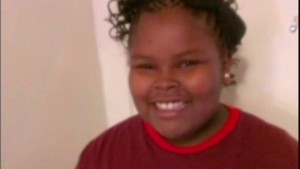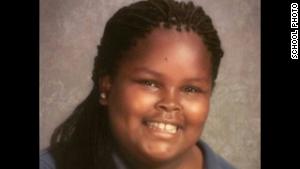इ दम दा मैनु कि वे भरोसा ,
आया आया, न आया ,न आया।
जीवन की नश्वरता। मृत्यु की शाश्वतता की ओर संकेत है इन पंक्तियों में। मौत के बारे में ग़ालिब साहब ने
कहा था -
मौत का एक पल मुएयन है ,
नींद क्यों रात भर नहीं आती।
जन्म और मृत्यु के बीच की अवधि को जीवन कहते हैं। जीवन और मृत्यु दो दरवाज़े हैं एक दूसरे के आमने
सामने ,एक दूजे से रु -ब- रु। जीवात्मा एक दरवाज़े से निकलके दूसरे में प्रवेश करता है। करोड़ों करोड़ सालों
से ये सिलसिला चलता आया है।जब तक व्यक्ति कृष्णभावनाभावित न हो जाए ,अपना मन ,बुद्दि श्री कृष्ण
के
चरणों में न लगा ले ये जन्म मृत्यु का सिलसिला ,ये देहांतरण एक से दूसरे शरीर में जीवात्मा का चलता रहता
है।
मौत का मतलब है देहांत बोले तो देह का अंत। सब कुछ खत्म नहीं होता है ,देह मरती है। देही नहीं। शरीर
मरता है शरीरी नहीं।
जब तक सांस चल रही है जीवन है। सांस गई जीवन गया। दिल का काम तमाम हुआ। ऑक्सीजन उठानी बंद
,खून का संचरण बंद। यही मृत्यु है चिकित्सा विज्ञान की शब्दावली में इसे नैदानिक मृत्यु (Clinical death )कह
लो। क्या फर्क पड़ता है।दिल धड़कना बंद हुआ ,दिमाग भी चंद मिंटो बाद ठंडा हो जाता है।ऑक्सीजन दिमाग
को भी चाहिए दिल को भी। दौरा दिल का भी पड़ता है दिमाग का भी दोनों काम करना भी बंद करते हैं पूर्णतया।
साइंसदान दिमागी मृत्यु को आखिरी मृत्यु , मानते बूझते हैं।
पांच मकान मालिक थे इस देह के वायु -अग्नि -आकाश -पृथ्वी -जल.
मौत के बाद पाँचों अपना हिस्सा ले लेते
हैं।
लड़ते रहो ,लड़ाते रहो,
दिल को मशीनों से धड़काते रहो।
आर्टिफिशियल हार्ट लंग मशीन ,वेंटिलेटर पर काया
को डाले रहो -
कौन पूछता है।
चिकित्सा नीति शाश्त्र की बातें कर लो।
अध्यात्म की कर लो-
जीवात्मा न कभी मरता है न जन्म लेता है। शरीर मरता है शरीर पैदा होता है। हम
शरीर को ही ता - उम्र कहते रहते हैं ये 'मैं 'हूँ ये 'मेरा' है।लेकिन ये कहने वाला कौन है इसे जानते ही नहीं है।
यही जीवात्मा है। जीव का भौतिक जगत से बद्ध हो जाना। कृष्णभावनामृत से विलग हो जाना।
जब जीवात्मा शरीर को छोड़के जाता है तब साथ में मन -बुद्धि -अहंकार को भी ले जाता है। अब बुद्धि तत्व ग्रे -
मैटर तो भाई साहब दिमाग में ही होता है। देह को चलाये रहो मशीनों से क्या फर्क पड़ता है। ममी बना के रख
लो या प्रशीतित कर लो देह को क्या फर्क पड़ता है। देह तो नश्वर है। छीजना ही है इसे।
दिमाग के टेलीफोन एक्सचेंज को ग्रे -मैटर ही चलाये रहता है।
sensory और motor neurons बनते हैं संचार सेतु।
पढ़िए एक रोचक डिबेट -सांस की धौंकनी को धड़काये रखने का मतलब क्या है जब कि उसकी हर सांस बे -
मानी है मशीनी है। लौहार की धौंकनी की मानिंद
When 'life support' is really 'death support'

Mom:Jahi is dead only if her heart stops
Two young females, both brain dead without warning, remain on ventilators while their devastated families challenge the judgments of their hospitals.
In one situation, the family believes a miracle is possible, and wants to prolong the patient's biological functioning. In the other case, the family wants to disconnect the patient to honor her wishes. But both families are facing obstacles.
The way we talk about neurological death has created a misperception, ethicists say: that "brain death" is somehow not as final as cardiac death, even though, by definition, it is.
The term "life support" exacerbates the problem, too, because those who are brain dead do not have a life to sustain, said Arthur Caplan, director of the Division of Medical Ethics at NYU Langone Medical Center. This seems to be a fundamental problem in both cases that have entered the national spotlight, he said.
"I think these cases have been botched, horribly," he said. "They're giving the impression that dead people can come back to life."
Brain dead, but kept alive
Here's a quick overview of the two situations:
Doctors in Oakland, California, declared Jahi McMath, 13, to be brain dead on December 12, three days after she underwent surgery to remove her tonsils, adenoids and extra sinus tissue, which doctors thought were causing sleep apnea.
She suffered complications from the procedure, which experts have told CNN is commonly done, but not routine.
A judge concluded Tuesday that Jahi is brain dead, but ruled that Jahi will remain on life support at least until December 30. The family of the teen is seeking to move her to another facility for treatment, the girl's uncle, Omari Sealy, told reporters Thursday.
Moving her would require the insertion of tracheostomy and gastrostomy tubes, family attorney Christopher Dolan said.
However, hospital Chief of Pediatrics David Durand said the judge didn't authorize a transfer to another facility.
"Children's Hospital Oakland does not believe that performing surgical procedures on the body of a deceased person is an appropriate medical practice. Children's Hospital Oakland continues to extend its wishes for peace and closure to Jahi McMath's family," Durand said.
When routine surgeries go wrong
But Jahi's mother, Nailah Winkfield, said on Friday, "I would probably need for my child's heart to stop to show me that she was dead. Her heart is still beating, so there's still life there."
In Texas, a hospital and family of a brain dead patient also clash over continuing life support, but the situation is further complicated because the woman is pregnant.
Marlise Munoz, 33, has been unresponsive since November 26, when her husband, Erick Munoz, discovered her on the kitchen floor at their home, said her mother, Lynne Machado. The family says she is being kept alive on a ventilator at John Peter Smith Hospital in Fort Worth, Texas.
Her family says she would not want her life prolonged by a machine, but Texas state law says "life-sustaining treatment" cannot be withheld from a pregnant patient, regardless of her wishes or the age of the fetus.
"At all times, we will follow the law as it is applicable to health care in the state of Texas," said J.R. Labbe, vice president of communications and community affairs for JPS Health Network, which oversees the hospital.
Life and death
These cases may make you think of Terri Schiavo, a brain-damaged woman who died in 2005 after living on a feeding tube for more than a decade. Schiavo was the subject of a lengthy legal battle between her parents and her husband, Michael Schiavo, who maintained she wouldn't have wanted to live in a "persistent vegetative state."
But "persistent vegatative state" means the brain still has some activity, even though the patient is in a deep state of unconsciousness. "Coma" is another word for this, according to the National Institutes of Health.
Both these situations are distinct from brain death -- according to the Uniform Determination of Death Act, an individual is dead when he or she "has sustained either (1) irreversible cessation of circulatory and respiratory functions, or (2) irreversible cessation of all functions of the entire brain, including the brain stem."
"It seems like there seems to continue to be confusion about what it means to die using neurologic criteria," said Cynda Hylton Rushton, professor of clinical ethics at Johns Hopkins University.
Rushton suggests, in fact, that this phrase "die using neurological criteria" be used instead of "brain death," to emphasize what it means.
Terms such as "mechanical support" or "artificial machine support" could be used to refer to sustaining the functioning of a brain dead person, Caplan said.
"No one wants to take away 'life support,' " Caplan said.
Unpacking the issues
In Caplan's view, it doesn't do any families any good if hospitals ask them about mechanically continuing biological function in a brain dead patient. He says doctors should be more transparent about the finality of brain death.
"It just creates the possibility of a terrible scenario like the one that's unfolded (in Jahi's case), where the parents don't really understand and then start to resist any removal of machines because they just want to hope that the worst possible thing did not happen," he said. "I don't think it's kind to not be clear when death happens.
In the Texas case, Caplan noted, where it's the family against a law, if Munoz is indeed brain dead, she is not, by definition, receiving "life-sustaining treatment."
It seems to Caplan that the law's intention was not to continue treating the dead.
"That the heart can continue breathing in a body like this is unnerving to people," said Kenneth Goodman, director of the Bioethics Program at the University of Miami.
One might argue that the fetus is alive, and is the one on "life support." But that opens up a lot of other issues: Will the fetus be viable? Was it damaged by the mother's lack of oxygen when she lost consciousness? Right now it is 18 weeks old; Machado said doctors will know more about its health at 22 to 24 weeks.
The Texas law in this case "imposes the view of the state on the adult pregnant woman, as to whether or not the fetus counts as a human being," Peter Singer, professor of bioethics at Princeton University, said.
Starting new dialogues
The misunderstanding surrounding cases such as Jahi's and Munoz's signals a need for a national conversation about brain death and levels of brain functioning, Caplan said.
Although there are scientific criteria for "brain death," the concept contains a moral judgment, Singer said. When viewed in connection to organ transplantation, there seems to be a value assessment that, for instance, the organs of a brain-dead person should be used to save someone else's life.
Organ transplantation and the idea of brain death have different origins, researchers argue in a 2007 paper in the Journal of Medical Ethics, but they became linked in 1963, when the first kidney transplant with a brain dead donor was performed.
Had these procedures with brain dead patients not emerged until more recent decades, in a cultural climate rife with right-to-life debates, perhaps there would have been more public discussion and controversy about the definition of "brain death," Singer said.
The public might have taken a closer look at what matters: Is it the "person," which exists by virtue of a functioning brain, or the organism?
"If you think that somehow what is precious, or what has a right to life, is simply an organism, then I suppose you might say, 'Well, this is not dead,'" he said. "This organism is still able to function. It needs medical support, but of course there's a lot of people who need medical support."
Jahi's family has said they are hoping for a miracle. Such cases also bring up the question of what is society's responsibility to accommodate requests based on faith, Rushton said.
"We really need to engage in a new dialogue that takes us out of the debate of faith into science, into a conversation about what are the limits of our human knowledge and technology, and how do we accept the fact that all of us will eventually die?" Rushton said. "These are the kinds of situations where there are no easy answers."
Medicine can't cure everything, but we act as though death is optional, she said.
We may have technology called "life support," but even that can't last forever.
What's the difference between clinical death and biological death?
We've all seen the scenes on TV and in the movies. Paramedics racing to recharge and injured person's heart and "bring back" the patient, or an emergency room trauma team worrying about how long a patient's brain has been deprived of oxygen. The concerns of such emergent care givers have to do with two kinds of death: clinical and biological. What, really, is the difference? Isn't death just, well, death? It turns out the answer is no, and there are real distinctions between the two.
The difference between clinical death and biological death is small: just a few crucial minutes, in fact. Clinical death is the point at which a person's heart stops beating. At that time, breathing and blood circulation stop. Biological death occurs some four to six minutes later, when the brain cells die from lack of oxygen.
When brain death occurs, all neurological functions irreversibly cease. The brain simply cannot survive for very long without oxygen. When oxygen is withheld beyond that six-minute threshold, brain death is the result. The reason the brain-death clock starts ticking down once the heart stops is because cardiac activity is the whole ballgame for our bodies, and brains. When the heart stops, oxygen cannot be transported to the brain and the brain dies from lack of it. The legal time of death is noted at the moment in which a doctor determines that a patient's entire brain has ceased to function.
It's still possible to resuscitate a person who has undergone clinical death and keep them alive by artificial means of life support, such as a respirator. However, when biological death has been established and the brain has been too long deprived of oxygen, resuscitation is impossible. Often, at that point, another clock starts ticking away in the background: the clock for organ donation.
Clinical Death:
1. Stoppage of heart beat, pulse and breathing is called clinical death.
2. Most organs (eye, kidney) remain alive after clinical death.
3. These organs are used for transplantation.
Biological Death:
1. The death caused by degeneration of tissues in brain and other part is called biological death.
2. Most organs become dead after biological death.
3. These organs can not be used for organ transplantation.



कोई टिप्पणी नहीं:
एक टिप्पणी भेजें